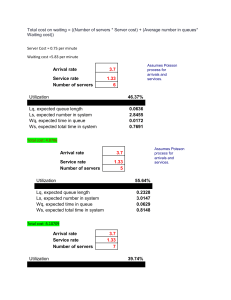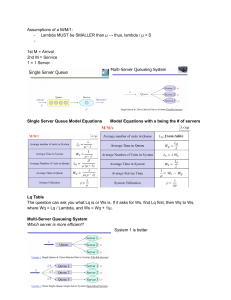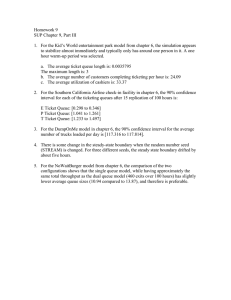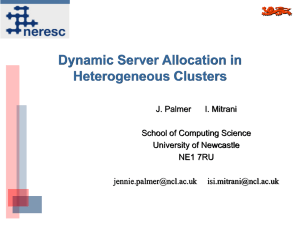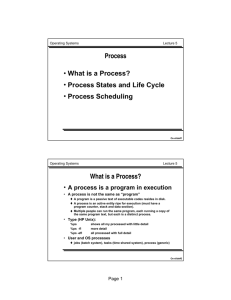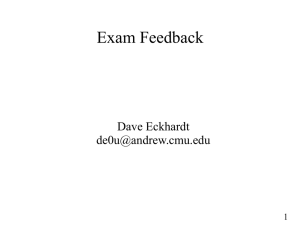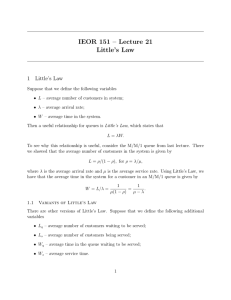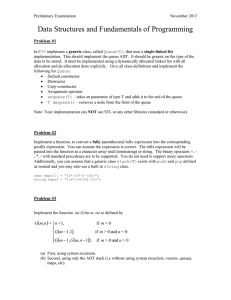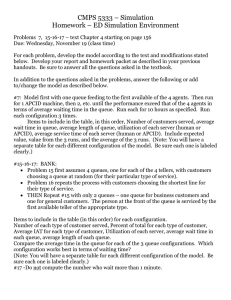IEOR 151 – Lecture 22 Square Root Rule 1 M/M/∞ Queue
advertisement
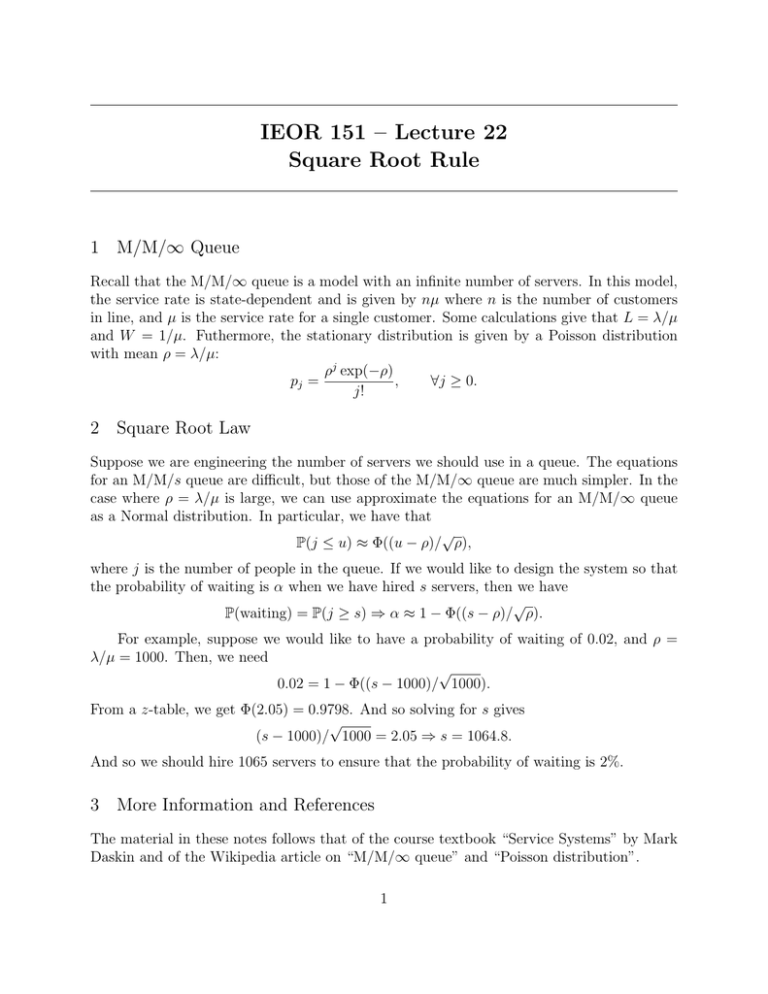
IEOR 151 – Lecture 22 Square Root Rule 1 M/M/∞ Queue Recall that the M/M/∞ queue is a model with an infinite number of servers. In this model, the service rate is state-dependent and is given by nµ where n is the number of customers in line, and µ is the service rate for a single customer. Some calculations give that L = λ/µ and W = 1/µ. Futhermore, the stationary distribution is given by a Poisson distribution with mean ρ = λ/µ: ρj exp(−ρ) pj = , ∀j ≥ 0. j! 2 Square Root Law Suppose we are engineering the number of servers we should use in a queue. The equations for an M/M/s queue are difficult, but those of the M/M/∞ queue are much simpler. In the case where ρ = λ/µ is large, we can use approximate the equations for an M/M/∞ queue as a Normal distribution. In particular, we have that √ P(j ≤ u) ≈ Φ((u − ρ)/ ρ), where j is the number of people in the queue. If we would like to design the system so that the probability of waiting is α when we have hired s servers, then we have √ P(waiting) = P(j ≥ s) ⇒ α ≈ 1 − Φ((s − ρ)/ ρ). For example, suppose we would like to have a probability of waiting of 0.02, and ρ = λ/µ = 1000. Then, we need √ 0.02 = 1 − Φ((s − 1000)/ 1000). From a z-table, we get Φ(2.05) = 0.9798. And so solving for s gives √ (s − 1000)/ 1000 = 2.05 ⇒ s = 1064.8. And so we should hire 1065 servers to ensure that the probability of waiting is 2%. 3 More Information and References The material in these notes follows that of the course textbook “Service Systems” by Mark Daskin and of the Wikipedia article on “M/M/∞ queue” and “Poisson distribution”. 1
